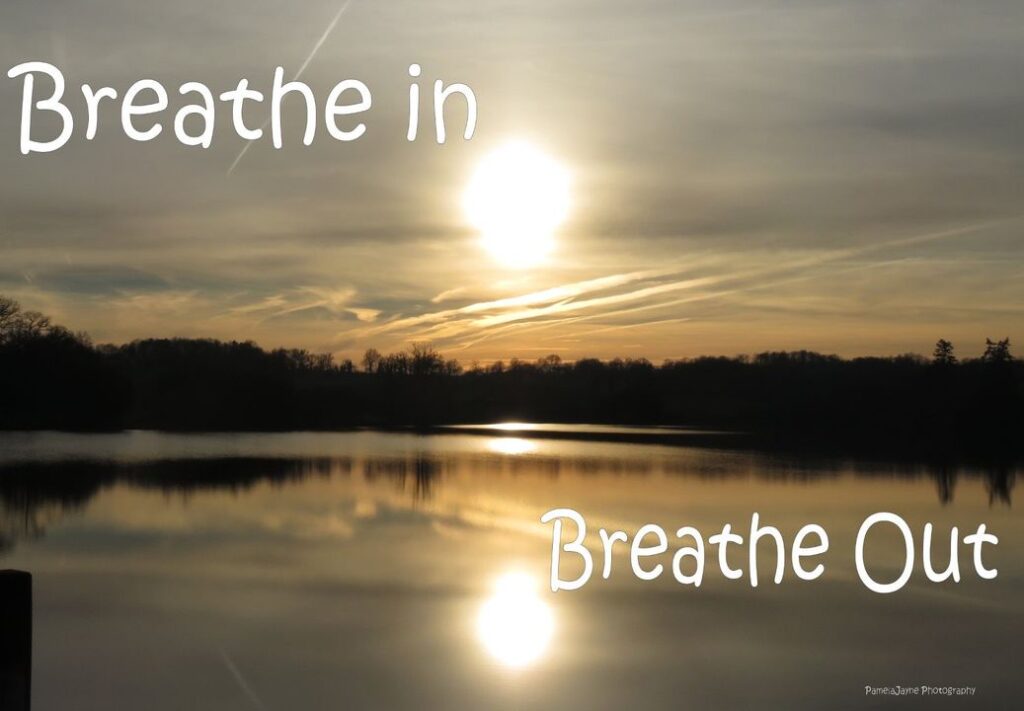HOLISTICALLY YOURS·WEDNESDAY, 12 FEBRUARY 2020

In part 1 of JBI – JBO I wrote about breathing in general and how poor breathing can affect our health as much as anything else!
You know that comment we all make, the one were we do something – that makes all hot and sparkling/glowing – yes – that word – exercise! And often we might say “Oh I am sooo unfit, I can’t even breath!” it’s probably 50/50 here you are trying to get fit and for those that do run, cycle, lift, dance, swim but poor breathing can hamper the workouts!
Breathing is so important when we exercise, because taking in regular, deep breaths promotes the transfer of oxygen that powers the muscles, and pushing out regular, deep breaths eliminates waste gases such as carbon dioxide.
Each time you inhale, you take in oxygen, which your body needs to function. The more that you move, the more oxygen you need.
We need energy for any kind of exercise, and having adequate oxygen is an important aspect of our energy production process. Therefore, getting your breathing correct is very important.
Naturally, we breathe through our nose. Therefore, it is a normal assumption to make that, in every context, breathing through the nose is the favoured option. The truth, however, is that it doesn’t really matter. Not what you expected? Me neither.
That being said, it’s true that breathing through the nose has its advantages. The nasal hair acts like a filter and the mucus helps in trapping particles. Breathing through the nose also warms and moistens the air. Because the nostrils are smaller than the mouth, air exhaled through the nose creates a back flow of air (and oxygen) into the lungs. And because we exhale more slowly through the nose than we do though the mouth, the lungs have more time to extract oxygen from the air we’ve already taken in.
However, while exercising, it is essential that enough oxygen is being inhaled. Therefore, while performing yoga or lighter exercises, one can breathe through the nose. Alternatively, while doing more heavy exercises, such as running, weight training etc., and mouth breathing can be employed, as it takes in a higher amount of air, and thus oxygen. More intense exercises demand a greater intake of oxygen and expulsion of carbon dioxide.
More important than breathing through the nose or mouth, the frequency and depth of every breath is what really matters.
Chest breathing is a less efficient way of breathing, as we end up not using the full capacity of our lungs. This leads to weaker performance, dizziness, weakness etc.
Diaphragmatic breathing, on the other hand, is your best bet for efficient, effective breathing. This specific type of breathing, which engages the diaphragm muscle with every breath, involves slowly breathing in through the nose or mouth (preferably the nose), filling up your abdominal area (versus your chest) with air, and then slowly exhaling as the stomach collapses.
When exercising, diaphragmatic breathing can help ensure core activation and that you’re breathing deeply enough to deliver enough oxygen to the muscles, which prevents them from fatiguing earlier.
Your diaphragm is a muscle located between your chest and abdominal cavity, and it should be the main workhorse that powers your breathing, whether you’re exercising or not, many of us don’t fully engage this muscle when breathing, and instead take shorter, shallower breaths that begin and end in the chest.
Breathing in this shallow way, you won’t be able to deliver as much oxygenated air to your lungs. This increases your heart rate and blood pressure, which can ultimately increase feelings of anxiety and stress, and even make you feel short of breath.
While breathing is one of the most natural, automatic processes in the body, paying attention to your breath during a workout can help make sure you’re breathing as efficiently and effectively as possible. It’s important to become mindful and stay mindful of your breathing as you move.
Because the nostrils are smaller than the mouth, air exhaled through the nose creates a back flow of air (and oxygen) into the lungs. And because we exhale more slowly through the nose than we do though the mouth, the lungs have more time to extract oxygen from the air we’ve already taken in.
General Tips: for breathing properly during exercise include:
- Relaxing your muscles and mind
- Being aware of your posture and body as you warm up
- Stand up straight or position yourself to breathe from the diaphragm
- Relax and open your chest
- Lift your chin
- Breathe in and breathe out evenly and deeply
- Make each breath you take in equal to each breath you push out
- Breathing out when you resist (or lift) weight and inhaling as you relax into starting position
- Taking deep breaths in can help stabilize muscles of your abdomen, back, and sides (core muscles) and protect your spine during exertion
- Not holding your breath
- Adjust your breathing or speed/intensity so that you may breathe in and out at a rate that matches your exercise pace
- Keeping a rhythm
- Counting breaths in and out
- Using your steps, cycling rotations, or another rhythm in your movement to help guide your breathing rhythm
- Listening to music that aligns your breathing and exercise rhythm
- Slowing your exercise pace if you cannot catch your breath
- Stand up straight with your hands over your head and breathe in and out deeply and evenly until your breathing rate returns to normal
- Adding yoga to your workout routine to learn mindful breathing techniques (pranayama) you can use in your cardiovascular and weight training workoutsFocusing on maintaining slow, even, and deep breaths until your breathing returns to normal as you cool down after your workout
Benefits of breathing properly during exercise include:
- Exercising more comfortably, safely, and for longer periods
- Preventing injuries such as hernias, spikes in blood pressure/strain on blood vessels, and back pain
- Increasing blood flow throughout the body
- Increasing your ability to relax
- Helping you let go of distractions and stay focused on your exercise
- If you are just starting back to exercise or if you are exercising for the first time, you may find that it’s difficult to control your breathing. But the good news is that heart and lung (cardiovascular) fitness improves quickly if you continue exercising regularly, and soon you will develop breathing patterns that are second nature to your activity!
To Be Continued…………….


